Bone grafting is generally a procedure for patients who have missing teeth. In some cases, Dr. Chen and Dr. Sowell may recommend bone grafting before placing an affordable dental implant. They may also recommend bone grafting to our denture-wearing patients. Jawbone grafts provide support for a more stable and comfortable fitting denture.
What is Bone Grafting?
Most dental bone grafting procedures restore your bone to its previous form following tooth loss, gum disease, or trauma. Bone grafting maintains bone structure after a tooth extraction. You lose 30% of your bone the first year after your dentist extracts your tooth, and 10% each year after that. Bone grafts and dental implants are important to maintain and preserve your jaw line and facial features.
Restoring and maintaining facial bone structure is important for several reasons. Many dental procedures require that the bone be as close to its original dimension and position as possible. The best results include bone grafting during implant placement. Also, the jaw and other facial bones support the skin and muscles responsible for our outward appearance.
Without the support of the underlying bone, our faces can look prematurely aged.
How Does Bone Grafting Work?
During the body’s normal maintenance cycle, specialized cells in the blood continually enter your tissue. They remove damaged cells and replace them with new healthy cells. Grafting procedures place material in the areas of missing bone to allow healthy cells to enter and start rebuilding. Over time, your cells will turn the graft material into functioning healthy bone.
| Before | During healing | After |
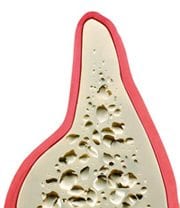 |
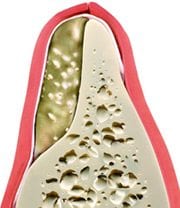 |
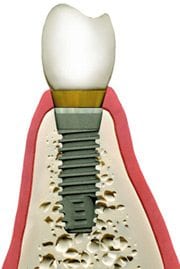 |
| Cross-section of a jaw that has lost volume following tooth loss. | The patient’s cells migrate into the Allograft material and remodel into new bone. Over time, the host bone will remodel to replace the Allograft. | The restored jaw now has adequate room for placing a dental implant to replace the missing tooth. |
Bone grafting material can come from many sources. The doctor takes autograft bone from another point in the patient’s body and transplants it to the desired site. Autograft bone contains the patient’s own cells and carries no risk of disease transmission. The chief drawbacks are that it requires a second surgical procedure, and enough harvestable bone may not be available.
Another bone graft source is Allograft, the inorganic component of cadaver bone. The advantage of Allograft is that it does not require a second donor site. Allograft bone is convenient and safe to use. The one disadvantage is the cost because of the processing that it takes to make it ready for your body.
What is Allograft?
An allograft is a type of tissue graft that a doctor takes from a carefully screened organ donor. We will process this donor tissue graft to ensure safety and improve handling characteristics. The doctor will also carefully screen the donor to ensure compatibility and reduce the risk of rejection by the recipient’s immune system. Allograft bone is well-documented and has an excellent safety record.
Advantages of an allograft include:
- Readily available
- No second surgical site
- Proven results
- Exceptional safety record
Allograft for Ridge Augmentation
Patients with missing teeth frequently experience bone loss. When a patient looses too much bone, they may not have enough volume or density in their jawbone to support a dental implant. This is where dental ridge augmentation comes into play as well.
Ridge augmentation restores support for dental implants or a denture. Dr. Chen and Dr. Sowell can use an allograft bone graft to restore your jaw bone to its natural shape. After restoration, it will support any dental prosthetic, dental implants, or a denture. A dental ridge augmentation will increase the height and width of the jawbone.
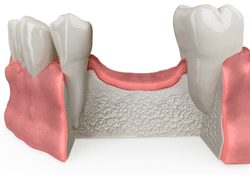
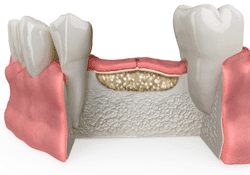
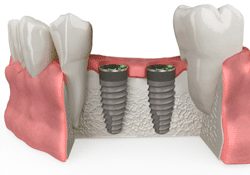
Allografts are grafting materials derived from human donors. In dental ridge augmentation, we use allografts to fill in areas of bone loss and bone deficiency. These grafting materials can help stimulate new bone growth and provide support for dental implants.
The use of allografts offers several advantages in dental ridge augmentation procedures. Firstly, they eliminate the need for additional surgeries to harvest bone from other parts of the patient’s body. This reduces both surgical time and post-operative discomfort. Additionally, technicians extensively process and sterilize allografts to ensure safety and minimize the risk of disease transmission.
During a dental ridge augmentation procedure using allografts, Dr. Sowell and Dr. Chen will carefully place the graft into the deficient area of the jawbone. This material will integrate with our patient’s natural bone tissue as new bone cells grow around it. Once we achieve sufficient bone volume through this process, we can successfully place dental implants. Ultimately, you will get a higher chance of long-term dental implant success.
Schedule a Consultation For Dental Bone Grafting
If you need implants or dentures and feel you may need bone grafting surgery in North Texas, call our Plano office at (972) 382-6855. We have helped many people from the Dallas, Plano, Frisco, and Southlake County areas and can help you, too. Call for a complimentary consultation, or you can request a consultation online.
